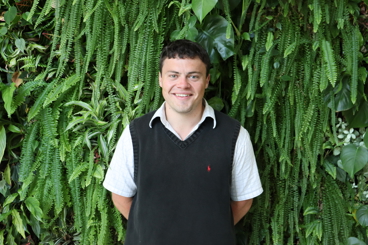


8 June 2025
At Foodbuy Group, we’re passionate about embedding sustainable practices into our supply chains. This includes protecting our oceans while delivering high quality fish and seafood to our members.
We sat down with our fish and seafood category buyer, Tom O’Hanlon, to talk all things ethical sourcing, sustainable practices, and the challenges the industry faces today.
What is your role and what does it entail day to day?
My role is Category Buyer for fish and seafood. At its core, my job is about sourcing the best possible products at the best value – making sure they meet our quality standards, are consistently available, and truly meet the needs of our clients. Day to day, that involves managing supplier contracts, mitigating inflation where possible, and constantly exploring new, more sustainable options to enhance our offering.
How did you get into this line of work?
I grew up on the Norfolk coast with a real passion for fishing and the sea. From a young age, I was involved in my dad’s shellfish factory, and after leaving school, I started working there. That experience eventually led me to take on a full-time role in procurement – starting out with packaging before moving into protein procurement, where I’ve also developed a strong focus on sustainability.
What are some of the key sustainability challenges in the seafood industry today?
The seafood industry faces two major sustainable and ethical challenges: overfishing and labour rights.
Overfishing continues to deplete species to near-irreversible level. Cod in the Barents Sea, for example, has seen significant decline over the past decade despite measures like annual quota reductions of 20%. To ease pressure on wild stocks, we are exploring aquaculture, though it brings its own sustainability concerns and, in many cases, should never have been necessary – it can be related to overfishing as it depletes the stocks of the species used as feed on aqua farms.
Labour rights are another critical issue. In parts of the industry, especially on deep-sea vessels, forced labour remains a concern. To mitigate this, I work with our dedicated Vendor Assurance team and our suppliers to ensure our supply chain is free from such practices. All our suppliers are required to be part of SEDEX, providing transparency and traceability across the supply chain.
How do you ensure the fish we source is sustainable and responsibly caught or farmed?
Certification and accreditation play a key role in ensuring sustainable and responsible sourcing. Standards such as the Marine Stewardship Council (MSC) and Aquaculture Stewardship Council (ASC) offer strong sustainability frameworks, incorporating ethical audits as part of their criteria. We are also inspired and informed by the work publicly available from Compassion in World Farming and Crustacean Compassion. Alongside these trusted certifications, we rely on our suppliers to choose partners who uphold the same high standards of sustainability and ethical practice.
How do we work with our suppliers to promote better practices?
We’re always working with a mindset of continuous improvement and really aim to be leaders in sustainable sourcing within the industry. One of the key ways we do that is by working closely with our suppliers’ sustainability teams to make sure our sourcing aligns with the Marine Conservation Society’s Good Fish Guide – specifically their ‘Best Choice’ ratings. We ask our suppliers to update these ratings monthly, alongside their pricing, so we can be confident we’re offering our customers the most sustainable options available at any given time.
Can you share an example of a supplier partnership that’s making a difference in terms of sustainability?
We work closely with our chosen supplier, Direct Seafoods, to continually improve our seafood offering. One example of that partnership is our work to promote ChalkStream trout – a sustainable, UK-farmed alternative to Norwegian salmon. It’s a great quality product that aligns with our values and delivers for our customers. We're also constantly looking at ways to push boundaries, including working to improve Marine Conservation Society (MCS) ratings from 1–3 fish to 1–2, which really reinforces our commitment to sustainability.
What are our members asking for more of when it comes to fish and seafood?
While price is certainly important, our clients are increasingly asking for innovative species that meet strong sustainability criteria. We’ve been exploring underutilised species and looking at how waste products and bycatch can be transformed into valuable offerings—making use of fish that might otherwise be discarded.
How do we balance cost, quality, and sustainability in our offerings?
Luckily in many cases quality and sustainability come hand in hand. More sustainable practices such as handline catch methods allow the quality to prevail as the fish are not crammed in a net. As for aquaculture, sustainable stocking densities and animal welfare practices keep the fish healthy allowing for the best end product for the consumer.
Read more about our sustainability initiatives, achievements and targets: https://www.foodbuy.co.uk/sustainability/
